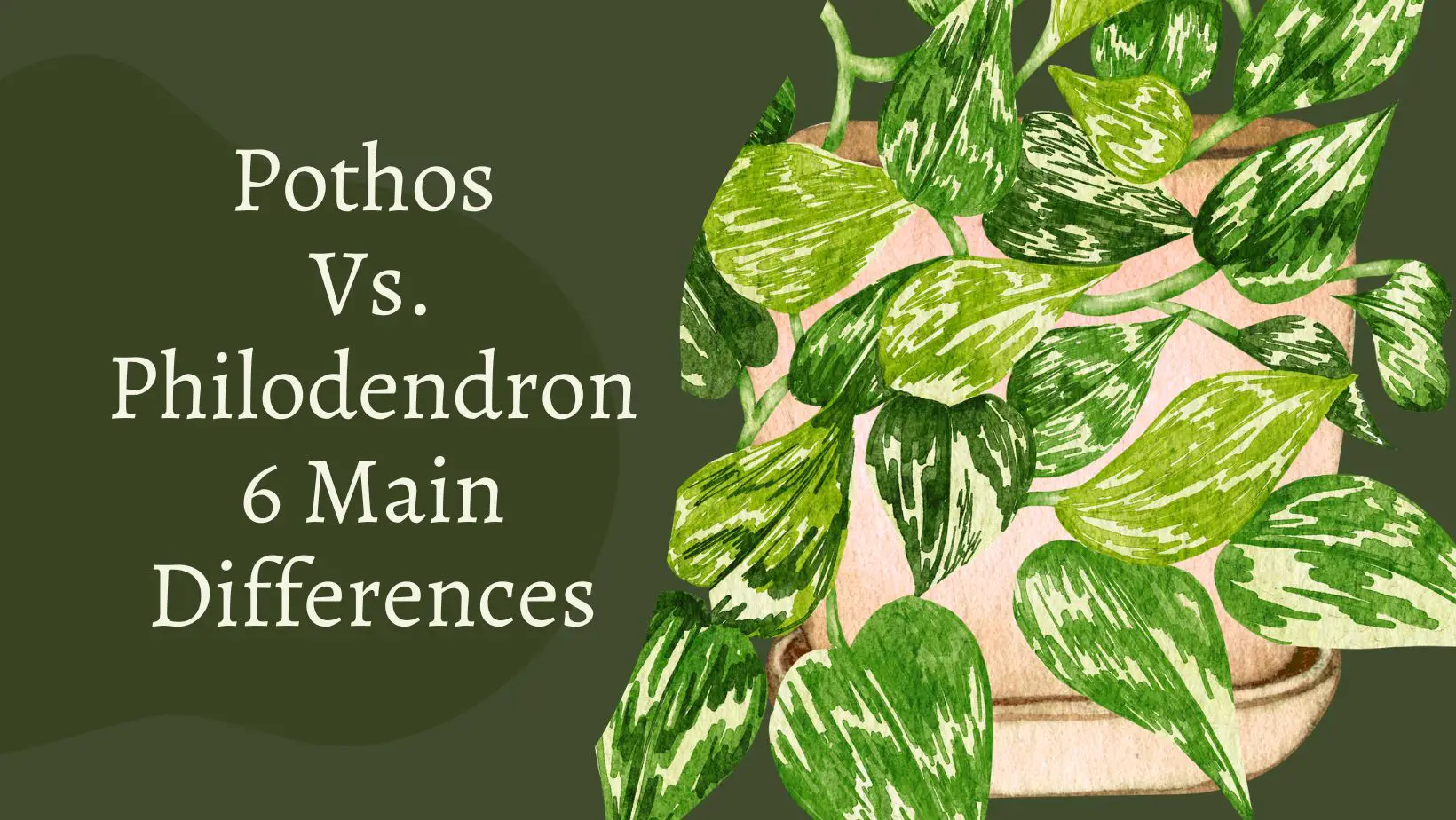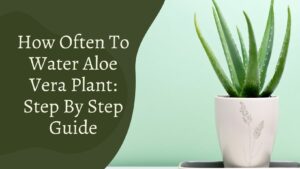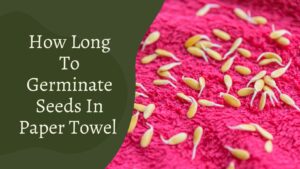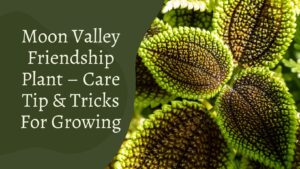
Many people confuse Pothos vs Philodendron, even though they’re so distinct. We’re here to assist you in sorting through the confusion caused by the many resemblances.
You’ll be an expert at identifying Pothos vs Philodendron plants. If you spend some time learning about their qualities. Each of the plants in this collection discusses in detail under the following sections. Pothos vs Philodendron seem distinct, and we’ll see examples that support this claim.
What’s the difference between Pothos vs Philodendron?

When it comes to popular houseplants, Pothos and Heartleaf Philodendron are often mistaken for one another. Many farmers keep a plant for a long time before discovering its true identity. also there are key distinctions between the two groups. There isn’t much of a challenge in distinguishing Pothos from Philodendron. Moreover, this article would help you do so.
Pothos vs. Philodendron: Which is better?

In contrast to the flat, extend, heart-shape leaves of the Heartleaf Philodendron, the glossy leaves of the Pothos are thicker. Petioles of Philodendrons are smooth, whereas those of Pothos are groove.Philodendrons also feature unique cataphylls and a wide range of new growth color variations.
Analyses Of Philodendron vs. Pothos

As expected, these popular houseplants know by a slew of different names. Many people refer to Pothos as Devil’s Ivy, Taro Vine, or Silver Vine.
All of these names pertain to a particular plant called Epipremnum aureum in scientific jargon. On the other hand, Scindapsus aureus may even be misidentify, as you’ll see on occasion. Although it is a scientific synonym, it is not the actual scientific name for this species.
A wide and varied genus of plants, philodendrons include a few popular varieties that are sometimes mistaken for Pothos. When it comes to philodendrons, lemon lime philodendron vs neon pothos and the sweetheart plant are two of the most usually misidentified plants.
For some reason, Philodendron hederaceum is more widely known as Philodendron scandens, even though it is different.
The Araceae family includes both Philodendrons and Pothos. Also, Pothos belong to Epipremnum; Philodendrons are part of the genus Philodendrons. To begin with, attempting to identify these plants only based on their names would be difficult. It is not uncommon for sellers to misidentify Pothos vs philodendron types indoor.
Green or wide variegated leaves adorn both plants’ vines, which may trail and climb.In terms of size and Philodendron vs pothos care, they’re very similar. It’s safe to say that both are low-maintenance.
The Importance of both Identification:

Only curiosity about your plant’s true origins is a valid reason to investigate its origins thoroughly. Pothos vs Philodendron are closely relates, but there are distinct differences. When it comes to hardiness, Pothos is superior to Philodendron. Even though both plants have strikingly variegated varieties, the philodendron leaves are more uniformly green than those of the Pothos.
Differences that make them unique:
Pothos

A Pothos will choose direct sunlight to dim light when given a choice. In contrast to a Philodendron’s preference for a smaller amount. the plant can withstand more intense sunlight than a Philodendron without getting sunburned.
In addition, it’s a bit more tolerant of droughts. A Pothos can endure the heat, but it’s not a fan of the cold. Coldwater might shock the plant’s roots.
Philodendron

When compare to the Pothos, the Heart leaf philodendron vs pothos can tolerate less light. Their variegation holds better in low-light conditions, as well. Propagation of Philodendrons is accessible (though both species are accessible).
As a result, they are better able to deal with cold weather. However, Philodendron pothos are less susceptible to frost than Pothos, and they stop growing in a cold environment.

It is possible to tell the two plants apart by looking at their leaves, despite appearing to be very similar at first glance. Verifying the leaves seems the quickest and easiest way to see if a species has a wide range of variation.
- Shape: Look at the leaf’s midsection: This philodendron types has a more heart-shaped shape, as well as a longer spout. As a general rule, Pothos leaves are less pointed at the ends than other plants.
- Texture: Thinner and smoother are the characteristics of Philodendron leaves. The topside has a soft, almost velvety feel. The topside of a Pothos leaf is slightly raise and has texture. A Philodendron lacks a well-defined ridge right through the middle midrib of this plant. A Pothos leaf seems to have the appearance and sensation of being waxed.
- Finish: The leaves of a Heartleaf Philodendron absorb light because of their matte-like surface finish. A Pothos leaf’s waxy surface gives off a gleaming sheen.
Is There a Cataphyll In Leaf Protection?

Foreground: Pothos without cataphyll (left), Background: Heartleaf Philodendron (right) (Right). To use this method, you’ll need to become familiar with some less-known plant parts, but it’s a surefire identification method. A cataphyll is a unique sheath found on philodendrons.
It grows from a node on the stem and shields each new leaf from the elements. The cataphyll is just an alter version of its leaf. While the “true” leaf unfolds, the “stem” leaf continues to photosynthesize. Eventually, the cataphyll dries up and falls off, becoming papery thin and brown in color.
Are pothos and philodendron the same?

No, both are different plants & have a few idiosyncrasies, to be sure. One peculiarity is that new leaves are frequently a different shade of green than those on the parent plant.
Depending on the time of year, the foliage of Philodendron can be brown or pink. If a mother plant is a deep green, its new growth may be olive-colored or orange- or red-hued same like mother of million plant. This color variation is more pronounced in some varieties.
Pothos varieties:

The new foliage on Pothos doesn’t make it pretentious. The fresh leaves may be lighter than the old ones, but this doesn’t happen consistently.
- Petiole:
Petiole grooved in Pothos (left), smooth in Heartleaf Philodendron (right). One can quickly tell the two plants apart by looking at their petioles. A short stem attaches vine leaves called a petiole. When it comes to Philodendrons, their petiole is entirely round and flat.
Compare to the leaves, it’s usually brown or a little lighter in color than that. Leaf stems of Pothos have grooved petioles that run parallel. There is a noticeable difference in the thickness of the petiole compared to a Philodendron. The foliage is the same or even slightly lighter in color.
- Aerial Roots:
Plants with aerial roots: Pothos (left) and Heartleaf Philodendron (Right). Aerial roots develop above the ground. Put another way; they’re “small local power plants” that sprout from leaf nodes and collect water and nutrients. They provide the plant with a way to climb and anchor itself to support its weight.
Aerial roots are seen on both Pothos vs Philodendrons. Roots this vigorous will cling to any rough surface, as you can see. It should keep plants in a pot unless you want them to grow up your walls or furniture; otherwise, they might leave behind black root scars when you remove them.
Small, thick nubs arise from the ground as the only aerial roots of the plant. Each node has a single root. There are more aerial roots on Philodendrons, making them seem like a small root system.
They appear in clusters of two to six, or even more, thinner and more spindly than those of a Pothos. When they’re in their growth phase, don’t trim aerial roots since they tend to reproduce in response to pruning. Trim them off during the winter months.
Growing Differences:

Pothos and philodendrons are highly similar in light, soil, water, and temperature requirements, and both are considers low-maintenance houseplants. But some subtle distinctions are worthwhile to know. Philodendrons can survive low light better than Pothos. Pothos can tolerate low light, but not as well as philodendrons.
Pothos enjoy warmer temps.
In addition to cuttings, philodendrons may also generate offspring to propagate plants. On the other hand, Pothos can withstand drought than philodendrons.
Pothos vs Philodendron toxicity is that they aren’t the only plants that may be mistaken for this one. Despite its widespread moniker of “silk pothos,” Scindapsus pictus, a member of the aroid family, is not technically a pothos. A vine-like growth habit and shimmering silver spots on all of its leaves give it an iridescent light.
Its growing needs are pretty similar to those of Pothos vs Philodendron. On the other hand, Satin pothos is simple to distinguish because of their distinctive leaf design.
A wide range of Pothos and trailing philodendrons exist, many of which resemble one another in appearance. If you follow these broad principles, any pothos or trailing Philodendron will be easy to recognize.
What’s the difference between Pothos vs Philodendron?

- Atmospheric Conditions:
Pothos prefers indirect light because most people keep their plants inside. If you want to grow this plant, you’ll have to be cautious about where you put it. If you’re doing anything incorrectly, keep an eye on the leaves of this tree. Freckles fade off the plant’s leaf if it doesn’t receive enough sunlight. There’s also no new growth, as you’ll see. When it comes to light, the plants are pretty similar. However, indirect light requires for Philodendrons. Overexposure to the sun might cause it to wilt. - Soil:
Philodendron is fussy when it comes to soil. Because this particular plant is particularly vulnerable to salts that induce leaf sickness, it requires regular soil changes. - Water:
Pothos only has to be water when the soil is arid. It might lead to the plant decaying if the soil is already wet. You can detect whether the plant is thirsty or oversaturated by looking at its leaves, so keep an eye out for them. When the plant is stressed, you may observe black stains on the leaves.
Philodendron requires more watering than Pothos, yet its roots might rot if the soil is too wet. The two varieties of Philodendron may also be easily distinguish. Climbing plants are more challenging and more drought-tolerant than vining plants. - Temperature:
Pothos-like temperatures between 65 and 75 degrees Fahrenheit (18,5 and 24 degrees Celsius). Above 55°F (13°C), Philodendron is intolerant to low temperatures. - Fertilization:
Fertilize potted plants once or twice a month with Pothos. Philodendron: fertilize once a month throughout the spring and summer months and every six to seven weeks in the fall and winter.
Propagation
Cuttings are used to grow plants like Pothos vs Philodendrons, relying on this strategy.
Propagation of Pothos:
- a pair of gloves and a knife recommends.
- chop off the plant’s stem
- Soak the stem you just cut in water.
- patiently await the appearance of fresh newborn roots
- For healthy new development, fill the container with the correct soil.
- switch from water to an airtight container
Propagation of Philodendrons:
- chop the stem off ( about 5ft.)
- Add water to it.
- wait for the seedlings to sprout into full-fledged plants
- Make a pot of soil that is well-water.
- Switch from water to an airtight container
Pothos and Heartleaf Philodendron exist in a plethora of variants, each with a different name chosen by dealers at random. Everything we’ve spoken about thus far in botanical distinctions is still relevant.
While Pothos vs Philodendron are distinct, other closely related species might also be challenging to tell apart. The Satin Pothos is sometimes mistaken for Philodendron hederaceum or Epipremnum aureum, but it is a Scindapsus pictus.
Satin Pothos, which has many characteristics with both Pothos and Heart leaf Philodendron. It is typically simple to distinguish because of its distinctive leaf pattern.
Variations of Pothos
Pothos has a greater variety of cultivars than any of the other species. Golden Pothos is the most popular; however, even the mainly green Jade Pothos may contain cream areas. The “shattered” variegation of the Marble Queen Pothos is particularly remarkable.
To maintain their coloration, Pothos requires indirect lighting that is moderately bright. In low light, they often switch to all-green leaves to increase photosynthesis.
Variations in Philodendron
Cultivars of philodendrons exist, although there is minor variation among them. The Ace of Spade’s variety has leaves with black undersides that seem reddish-orange at first. It looks more like a regular Pothos than a Philodendron!
On the other hand, Variegated Philodendrons and pink birkin tend to have sharper delineations and retain their color better than Pothos in low-light circumstances.
Inconvenience: Philodendron vs. Pothos
One fault unites Philodendrons and Pothos. Individuals change their minds about growing any of these plants because they are hazardous to pets. Whenever you reside inside a dry environment, your philodendron brasil vs pothos plants may not grow well in your home.
Conclusion:
These are unique plants that may create a jungle-like appearance in the comfort of your own home. Because of their general look, they’re both aesthetically pleasing and calming. In addition, because neither one requires much effort, they are simple to maintain.
It’s also an excellent option for homes with a lot of cigarette smoke. Also, certain Pothos plants get a sturdy and robust stem to hang things upon. The green leaves stand out as the most significant visual distinction. Freckles or stripes on the Pothos plant vary in color.
On the other hand, Philodendron leaves have a more muted appearance than Pothos leaves. Both houseplants are lovely and placed in any room of your home, so deciding between them might be difficult.
As a result, I hope that this essay on the differences amongst common Pothos vs Philodendron houseplants has been helpful. With a few key characteristics, two plants that appear to be very similar can suddenly be distinguished.

Hi This is Maria, We are a team of gardening enthusiasts with a passion for gardening. We have tried to bring you tips and advice enabling you to grow and maintain a healthy and beautiful garden. We Hope You Find it Useful.






